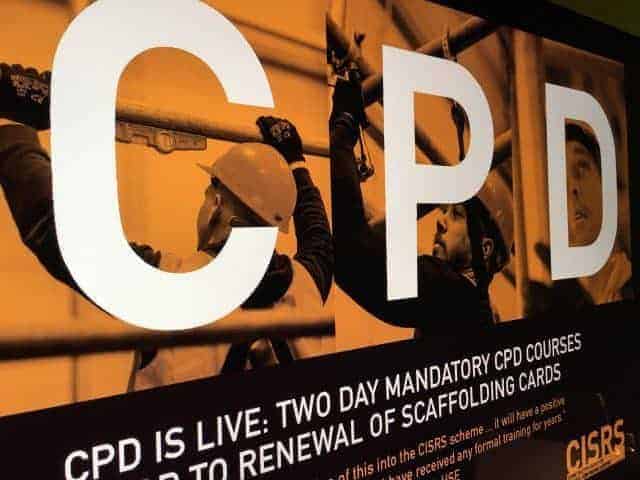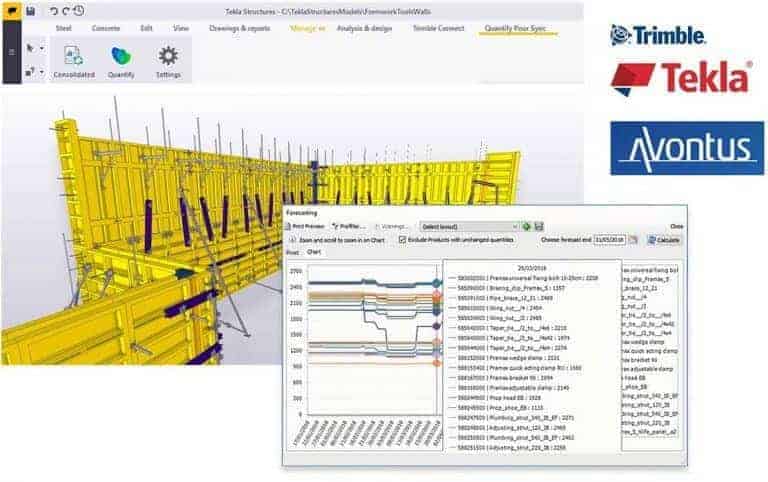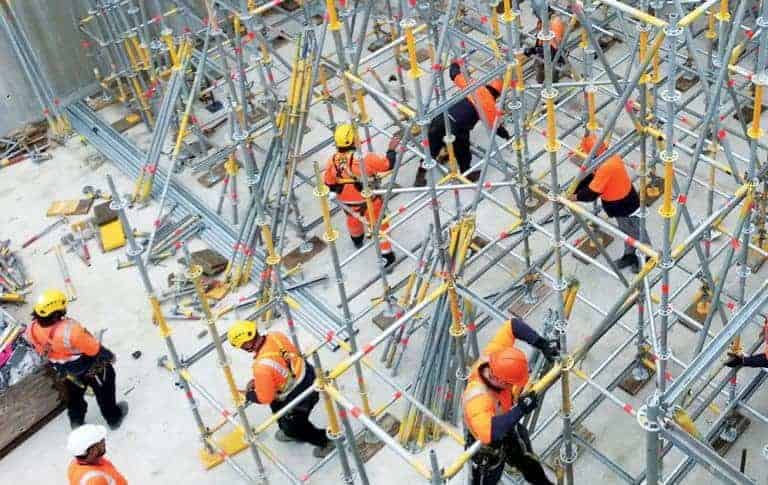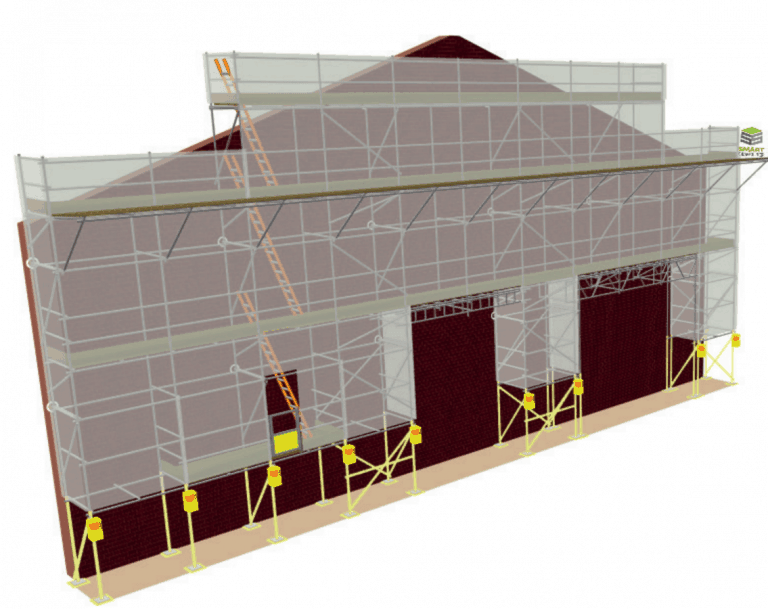Bid to keep jobs at Bircham Newton
Talks to take place next month to find a way to keep jobs and construction training at the facility.
The Construction Industry Training Board (CITB) is sitting down with local politicians and industry bosses in Norfolk next month to discuss the future of its Bircham Newton training centre. The meeting will predominantly focus on saving jobs at the site and will be chaired by King’s Lynn & West Norfolk Borough Council. Attendees will include Chris Starkie, chief executive of New Anglia Local Enterprise Partnership (LEP), Saul Humphrey, director at Morgan Sindall and chairman of the LEP’s Building Growth board, and local MP, Sir Henry Bellingham. College leaders, along with representatives from Norfolk County Council and Jobcentre Plus will also join the meeting. It follows the CITB announcement back in November last year that Bircham Newton was to close after the training body laid out plans to streamline its business operations as part of a major shake-up. Brian Long, leader of King’s Lynn & West Norfolk Borough Council, said: “We appreciate the reasoning behind CITB’s proposed move away from direct training, which is why we’re keen to maximise the potential opportunities for new partners at the site. We’re pleased to be hosting this session with the aim of creating a Vision 2020 Taskforce to ensure that all ideas and solutions are geared towards a positive outcome for the future of the site.” CITB chief executive Sarah Beale said: “The industry has been absolutely clear the CITB must reform but we also care very much about the communities and individuals affected by our change programme. We are pleased to be working with key stakeholders to find the best possible future for our Bircham Newton site. “When we consulted recently with colleagues at the borough council, I found it particularly heartening to be met with open, responsive and positive attitudes towards our suggestions. The site has huge potential and, working together, we stand the best chance of maximising its benefit for both West Norfolk and the construction industry.”Parliamentary Inquiry into falls from height launches
New All Party Parliamentary Group (APPG) for working at height has launched an inquiry into the numbers of serious injuries and fatalities which occur because of a fall from height and falling objects.
The PASMA sponsored inquiry chaired by Glasgow Central MP Alison Thewliss, is looking into height safety and are seeking evidence submissions from interested stakeholders by 2 March 2018. In Parliament The APPG will consider this evidence and produce a report and recommendations on how the frequency of serious injuries and fatalities can be reduced. In 2016/2017, 18% of those who died at work were killed due to a fall from height. PASMA and the 11 member organisations of the Access Industry Forum (AIF) believe there are a range of issues that urgently need to be addressed to help reduce these alarming figures. Alison Thewliss, Chair of the APPG for Working at Height said: “That 18 percent of people killed at work did so as a result of a fall from height is a shocking statistic. The APPG for Working at Height has brought together concerned MPs from several parties to investigate the reasons for falls from height and ensure current regulations are sufficient for protecting workers at height in the UK.” PASMA managing director Peter Bennett said: “I would urge all organisations engaged in working at height to submit evidence to this inquiry – and help to ensure that all of those who work at height return home safely every day.” To submit evidence to the inquiry, please visit https://workingatheight.info/Over 1000 Scaffolders have renewed CISRS card via CPD
Over 1000 Scaffolders and Advanced scaffolders have now attended the CISRS CPD course.
The Construction Industry Scaffolders Record Scheme (CISRS) have announced that over 1000 Scaffolders and Advanced Scaffolders have now attended the CISRS CPD course and applied to renew their CISRS cards under the new scheme rules. The requirement for scaffolders to complete the 2-day course prior to card renewal caused quite a stir when it was introduced in July last year. However, CISRS say in a statement that despite the initial backlash from some segments of the sector, the new course has been very well supported. Interestingly, the statement goes on to say that In July and August last year accredited CISRS training providers had proceeded cautiously in relation to the amount of CPD courses that were included within their training programmes. But in reality the number of scaffolders looking to attend the CPD course has proven to be much higher than expected with centres making additional courses available to meet demand. Dave Mosley CISRS Scheme Manager said: “This is a fantastic achievement in such a short space of time, as any change to an established scheme usually takes quite a while to bed in. “We had expected a lot of people whose cards expired in 2016 simply to take a H&S test and apply for an early renewal prior to the CPD requirement going live. These figures show that there are plenty of scaffolders who have completed the programme and demand for places on courses is increasing.”
 CISRS also say that when the industry was initially informed about the intention to introduce a CPD/refresher element to the CISRS scheme, it met with a very mixed response, ranging from “It’s about time” to “I’ve been doing this for years, what can you tell me?”
Jonathan Gaunt Training Manager for Generation Training Services said “It’s interesting to see the change in attitude of some of the scaffolders over the 2 day programme. Initially they arrive feeling that they will learn very little, however giving them a knowledge test early in the course usually highlights that there are areas they do need to brush up on.
“It’s been a long time since some of the delegates attended a training centre and for those who got their card under Grandfather Rights it could actually be the first time. After the initial uncertainty they tend to enjoy the course and mixing with their peers, the delegate feedback forms reflect a positive experience.
“We commend CISRS for responding to the demands of both the construction industry and the HSE, producing a comprehensive CPD product for Scaffolders with a very timely, positive approach.”
CISRS also say that when the industry was initially informed about the intention to introduce a CPD/refresher element to the CISRS scheme, it met with a very mixed response, ranging from “It’s about time” to “I’ve been doing this for years, what can you tell me?”
Jonathan Gaunt Training Manager for Generation Training Services said “It’s interesting to see the change in attitude of some of the scaffolders over the 2 day programme. Initially they arrive feeling that they will learn very little, however giving them a knowledge test early in the course usually highlights that there are areas they do need to brush up on.
“It’s been a long time since some of the delegates attended a training centre and for those who got their card under Grandfather Rights it could actually be the first time. After the initial uncertainty they tend to enjoy the course and mixing with their peers, the delegate feedback forms reflect a positive experience.
“We commend CISRS for responding to the demands of both the construction industry and the HSE, producing a comprehensive CPD product for Scaffolders with a very timely, positive approach.” Estimating software firm Avontus teams up with Trimble
Concrete contractors face unique challenges when estimating, planning, and managing their formwork operations. In addition to needing an accurate and understandable design, inadequate planning can result in costly delays that affect the entire project. And, knowing when and where equipment is needed is essential. Trimble and Avontus have partnered to help concrete contractors with these challenges.
“Tekla Structures, including its unique concrete pour planning and formwork tools, has been a game changer for our customers” says Andy Dickey, Business Development Manager at Trimble. “Our powerful 3D modeling and BIM capabilities make creation of detailed formwork plans faster than ever before. Contractors have full visualization into how formwork is planned and can more efficiently manage and coordinate their work.”
Enhancing Trimble’s commitment to improving operational efficiency, Trimble has partnered with Avontus, driving a more streamlined and productive way for concrete contractors and formwork providers to estimate, plan and manage their formwork operations. The equipment information in detailed formwork models created with the Tekla Structures is now integrated into Quantify, Avontus’ inventory management software.
“The bottleneck in inventory management has always been the lack of an easy-to-use bill of materials,” says Brian Webb, CEO/Founder of Avontus. “When shipping equipment for multiple pours to a site, it’s very important to consolidate formwork materials into a unified list. These lists are used to ship exactly what you need to the site to get the job done, as well as to return formwork as soon as it’s no longer needed.”
Joining Tekla Structures with Quantify takes the industry to an entirely new level. Formwork modeling and detailing is now integrated into a fully-featured equipment management suite.
“Whether a small concrete contractor or a large multi-national formwork provider, the combination of Tekla Structures and Avontus Quantify allows those planning and managing formwork to solve bigger problems. This new integration between our software will vastly improve their operations.” Dickey says.
Learn more about Tekla solution for concrete contractors
Download Tekla Structures – Quantify export in Tekla Warehouse (available for customers in maintenance)
Tekla Software by Trimble
Tekla software solutions for advanced BIM and structural engineering are produced by Trimble. Trimble’s construction offering ranges from total stations to advanced software, giving the industry tools to transform planning, design, construction and operation of buildings. Tekla software is at the heart of the design and construction workflow, building on the free flow of information, constructible models and collaboration. Information about Tekla software: www.tekla.com
Trimble
Trimble is transforming the way the world works by delivering products and services that connect the physical and digital worlds. Core technologies in positioning, modeling, connectivity and data analytics enable customers to improve productivity, quality, safety and sustainability. From purpose built products to enterprise lifecycle solutions, Trimble software, hardware and services are transforming a broad range of industries such as agriculture, construction, geospatial and transportation and logistics.
Quantify
Quantify makes managing your formwork business easy. From one user-friendly program, you can monitor inventory, ship materials, generate invoices, job costs, set reminders, manage re-rentals, and oversee all of your projects. Using your custom catalog, Quantify will track where every piece of equipment is and calculate how much you’re owed in rental. Anytime you want to know more, just run a custom report. You’ll stay on top of your business and free up countless hours. Information about quantify: www.avontus.com
Avontus
Avontus’ has been producing quality software since 2002, focused exclusively on the formwork, shoring, and scaffolding industries. Their easily-operated and thoroughly tested software is the most technically advanced in the industry.
Additional information
Andy Dickey, Business Development Manager at Trimble, email [email protected]
Andrew Smith, Business Development Manager at Avontus, email [email protected]
Benchmark fined after scaffolder seriously injured
Specialist contractor Benchmark Scaffolding has been fined after a scaffolder suffered serious injuries.
Derby Magistrates’ Court heard how, on 22 February 2016 at a site in Chaddesden, a 24-year-old employee, Lee Gaskin was injured during the loading of bins of scaffold fittings onto a lorry using a Hi-Ab lorry mounted crane. The Hi-Ab arm knocked him from the bed of the lorry to the ground and he suffered significant injuries to his arms. A HSE investigation found that Benchmark Scaffolding Limited failed to properly plan the lifting of scaffolding parts onto a lorry. The investigation also found that they failed to provide clear instructions and supervision and failed to ensure that the lifting of scaffold parts was carried out in a safe manner. Benchmark Scaffolding Limited of Waterside Trading Estate, Hanwell, London pleaded guilty to breaching Regulation 8(1) of the Lifting Operations and Lifting Equipment Regulations 1998. The Company was fined £40,000 and ordered to pay full costs of £1,968.63 and a Victim Surcharge of £170. Speaking after the hearing, HSE inspector Katherine Blunt said: “This was a very serious and wholly avoidable incident, caused by the failure of the company to plan and implement safe systems of work, for the loading of scaffolding parts on to the lorry. “This incident could so easily have been avoided through the company properly planning the lifting of scaffolding parts onto the lorry, giving clear instructions for employees to follow, and having a competent person identified as Supervisor. This would have ensured the lift was carried out in a safe manner”.New Zealand Scaffolding apprenticeship scheme sets up
The New Zealand scaffolding industry is hoping a new apprenticeship scheme will help the profession reach new heights.
The industry is offering a three-year apprenticeship for people to learn the ropes of the trade while working on the job. Developed by the Skills Organisation and the Scaffolding, Access and Rigging Association (SARNZ), it’s hoped it will help the industry tackle a long running skills shortage. Speaking to local media Radio NZ, SARNZ chief executive Graham Burke said: “It’s not getting any better, so the forecasts in the construction pipeline are for strong growth for some time to come yet and there’s never been a better time than to get into the industry as far as building a career,” He hoped it would help make the profession more attractive and build bridges with new talent. “We’ve had a level 5 qualification as our highest qualification for a long time but we’ve never actually been recognised as a trade by the general public and it seems like until you actually have an apprenticeship people don’t recognise the skill level in the industry. “I think it will help us get the recognition from schools and parents and people looking at embarking on a new career; that is we’re not just a labouring trade.”‘Business owner’
Phil McConchie’s company Camelspace employs around 130 people and is one of the country’s largest scaffolding companies. Also speaking to Radio NZ he said: “It’s hard enough actually to hire unskilled people to just move things from A to B but it’s infinitely more difficult to hire skilled people. It’s one of our biggest constraints.” He said it was hard to train people as experienced staff were required to help, but also getting into training was hard with only a few private training organisations. “We’re not alone in the scaffolding industry with being dissatisfied with the way that works and that holds us back. We can have people ready to enter polytechnic block courses under the existing system and we’re happy to pay all the fees as a company to train people and those training organisations are just not in a position to take them.” He said some eager labourers had to wait up to nine months to get into a class. “As we’re short of skilled people we’re keen to back them and pay for their training and get them on the course. With the existing courses this seems to be such a problem. The candidates are willing, the companies are willing, but the system at the moment just doesn’t seem to be able to keep pace.” Mr McConchie said with health and safety standards now higher and scaffolding used more widely the need was even greater. “We’re building hanging scaffolds off 60, 80-metre buildings coming down from the top in central Auckland, we’re building grandstand seats for Rugby World Cups, Cricket World Cups. We’re building concert stages for the country’s biggest events. “So it’s a serious business that needs to be done properly and there’s quite a bit of skill involved now.” He said he was “optimistic” about the new apprenticeship scheme and planned on enrolling a few of his current labourers in the next few weeks.Godiva bags scaffolding contract on Coventry’s tallest new build
Godiva Access & Scaffolding has secured the scaffolding contract to provide its services on Coventry’s tallest new build, creating 20 new jobs.
The Coventry-based business confirmed that they started work on the site this week. Working in partnership with main contractors Winvic Construction, Godiva’s scaffolding specialist will use more than 900 tonnes of scaffolding to help Winvic construct the new 1,192-bedroom student accommodation complex in two towers, one 23-storeys and a second at 14-storeys, connected by smaller blocks. The scheme is located on the corner of Fairfax Street and Cox Street in the city and forms part of a city-wide rejuvenation project that follows the announcement that Coventry will be City of Culture 2021. The new win bolsters a growing order book for the Canley business, which is working on contracts across the West Midlands, and means that it now wants to recruit 20 more scaffolders during the first quarter of 2018. Colin Taylor, managing director at Godiva Access & Scaffolding, said: “This is a fantastic win for us and it will help to create new jobs for local people in Coventry. We have a really strong background in working on skyscraper construction so to be able to work on what will become such a prominent feature in Coventry’s sky line is hugely rewarding as we can really showcase our skills in this area. With Coventry being announced as City of Culture 2021, there couldn’t be a better time for us to be involved in such an exciting project for the city.”SMART Scaffolder launches 2018 update
Software giants CADS SMART Scaffolder have just released their latest update for 2018.
Dorset based company SMART Scaffolder are constantly adding new functionality to their estimating and TG20:13 compliance software. In their latest release, they have added some exciting features that mean you can input your scaffold in seconds, just take a tender schedule and simply key in the dimensions to produce automated drawings, precise quotes, accurate load lists, 3D visuals and TG20:13 summary reports. Commenting on the update Ian Chambers, Sales and Marketing Director at SMART Scaffolder, said “We always listen to what our customers tell us and this year’s release means any sized firm can quickly produce a quote they can be confident in”. The software firm say there are plenty of other improvements, including a new report to show the costs involved in a project, clearer quotations and improved client data sharing across a company network. They have also updated Draw IT, a free bolt on for Autodesk AutoCAD 2018, which provides blocks, guides and tools for editing scaffold drawings in AutoCAD.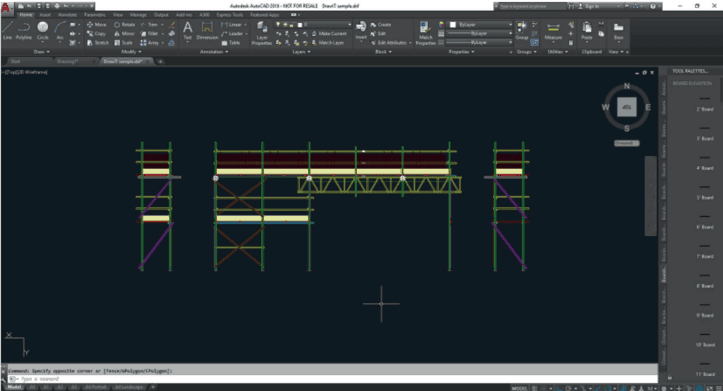 According to the firm, when combined with the existing powerful functionality, the new features make SMART Scaffolder the most comprehensive estimating software scaffolders can buy.
To see more details, visit the SMART Scaffolder website.
According to the firm, when combined with the existing powerful functionality, the new features make SMART Scaffolder the most comprehensive estimating software scaffolders can buy.
To see more details, visit the SMART Scaffolder website. Big Ben launches new Gold Groove™ Level
Swiss tool manufacturers Big Ben® have launched a new eye-catching magnetic level made from aircraft alloy with a smart grooved base.
According to stockists Leach’s, the golden coloured scaffolders level called Gold Groove™ is proving popular amongst scaffolders across the country, and we can see why! This ultra-tough, top shelf premium level has been machined from aircraft alloy and is said to be the perfect size and shape for scaffolders, weighing only 240g. The Gold Groove™ level also boasts a top class Vistatech™ vial which is far easier to read in various light conditions making the level far faster to work with and more accurate to work with. Apart from the level having the beautiful looks of a Italian supercar, Gold Groove has the addition of a smart groove along it’s base which ensures it always sits straight on the scaffold tube and has Induction magnetics technology™ which is guaranteed for life ! Leach’s say the development of this groundbreaking level is the result of very much research and input from Scaffolders over the years. Eventually after a lot of investments, new technology has made it possible to machine this simply beautiful tool out of a single piece of solid material.
With it’s golden colour the level comes with a golden price for it’s premium features and exquisite design expect to pay £79+VAT.
However as the saying goes ‘you buy cheap you buy twice’.
Leach’s say the development of this groundbreaking level is the result of very much research and input from Scaffolders over the years. Eventually after a lot of investments, new technology has made it possible to machine this simply beautiful tool out of a single piece of solid material.
With it’s golden colour the level comes with a golden price for it’s premium features and exquisite design expect to pay £79+VAT.
However as the saying goes ‘you buy cheap you buy twice’.


